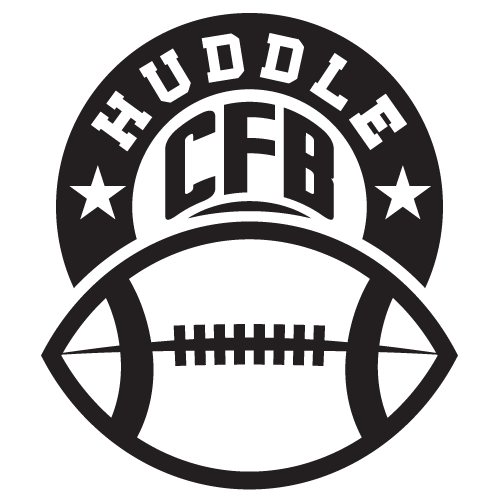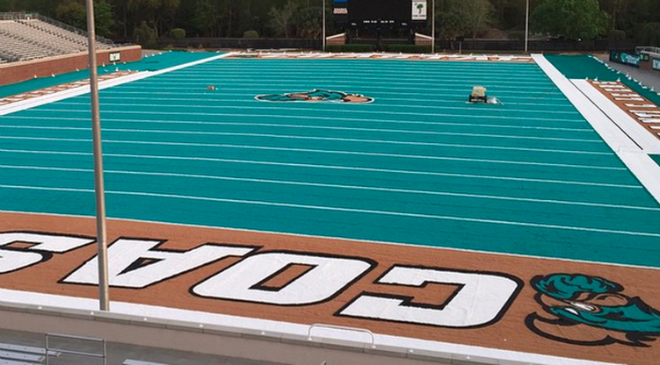Good times are rolling for Coastal Carolina athletics.
Chanticleer baseball has long been high quality, but stuck in Joe Flacco territory — no one would call it elite. That’s changed over a few weeks this summer, with Coastal Carolina advancing to the first College World Series in program history, and Saturday, beating TCU for a second straight game to advance to the championship round.
This ongoing baseball run is, thus far, the mantle piece of an all-around high point for Chanticleer athletics. Coastal’s men’s basketball team made the NCAA Tournament in 2014 and 2015, going so far as to put a scare into No. 1 seed and eventual runner-up Wisconsin in the latter season.
Chanticleer alum Dustin Johnson has grown into one of the hottest names on the PGA Tour. Coastal even gained national exposure hosting the fictional Myrtle Beach Mermen on Season 3 of HBO’s Eastbound and Down.
And Coastal Carolina football? In September, it accepted an invitation to join the Sun Belt Conference and thus move up to the Football Bowl Subdivision. CCU’s other sports begin play in the SBC in August; the football program begins with a transitional season in 2017, and full FBS membership in 2018.
The jump from the Big South to the Sun Belt and FBS is not in the same category of “good times” with some of the Coastal athletic department’s other recent successes. Not on its own, anyway. The Chanticleers must answer some big questions in the coming years that will define the success of this move.
First and most obvious: How will Coastal Carolina fare at that level? Other recent additions from the Championship Subdivision, Appalachian State and Georgia Southern, made hay immediately upon joining the Sun Belt.
But both the Mountaineers and Eagles benefited from well-established histories in Div. I-AA/FCS. Both programs won national championships and featured Walter Payton winners.
Coastal Carolina football launched just 13 years ago. The Chanticleers have had success in that time, reaching the FCS Playoffs six times — including the last four years straight — but never advanced beyond the quarterfinals.
Head coach Joe Moglia’s commanded national attention, as has Coastal’s teal turf field. The uniqueness of both give CCU a clear identity, with the former TD AmeriTrade CEO Moglia’s brand of fast-paced football defining the Chanticleers as one of the nation’s most fun teams.
The program is still very much fledgling, though. It hasn’t built the reputation of an Appalachian State nor a Georgia Southern, and in turns, has not cultivated the same kind of rabid following as either. Therein lies the even greater challenge in FBS for Coastal Carolina, beyond fielding a competitive team.
Coastal’s home venue, Brooks Stadium, currently seats a little more than 9,000 — roughly equivalent to the university’s student enrollment. To meet FBS requirement, Brooks Stadium is expanding to 20,000.
Filling those seats is priority 1 for Coastal athletics. Winning football is the first step, but fighting the same fight other Group of Five programs face in a rapidly changing landscape is next and of equal importance.
Even Power Five programs scrap tooth-and-nail to compete with the many entertainment options fans have, and they do so with far more resources — resources afforded to them, in part, by huge TV contracts.
Television is putting more of a squeeze on the Group of Five every year. Case in point: Conference USA — which took on FCS call-ups Old Dominion and UT-San Antonio in recent years, as well as former Sun Belt members Western Kentucky, MTSU, North Texas, FAU and FIU — had its TV revenue dramatically slashed just last month.
Each C-USA member will receive a reported $1.5 million per member. That vastly outpaces Coastal Carolina’s new home, the Sun Belt.
FBS membership alone is not a golden ticket. Awarding more scholarships, stadium expansion and maintenance, and other costs tied to the highest level of college football mean taking on a considerable risk.
The possible reward for that risk is growing into a Boise State. The perfect scenario for Coastal Carolina sees the Chanticleers emulating the Broncos. BSU moved up from the Big Sky Conference, where it wasn’t a powerhouse by any means, but grew into something special at the Div. I-A/FBS level.
Coastal already has the field to contend with the Smurf Turf, so in at least one way, the Chanticleers are on the right path.
But CCU football needs other ways to stand out. The attention a national championship in baseball would command is one small way to bringing more focus on Coastal Carolina, and perhaps be parlayed into more for the football program.



[…] Coastal Carolina has reached the championship series of the College World Series and the school hopes the national success will also boost its FBS football program. […]
[…] Can A Wave of Success Carry Coastal Carolina into FBS Unknown? […]